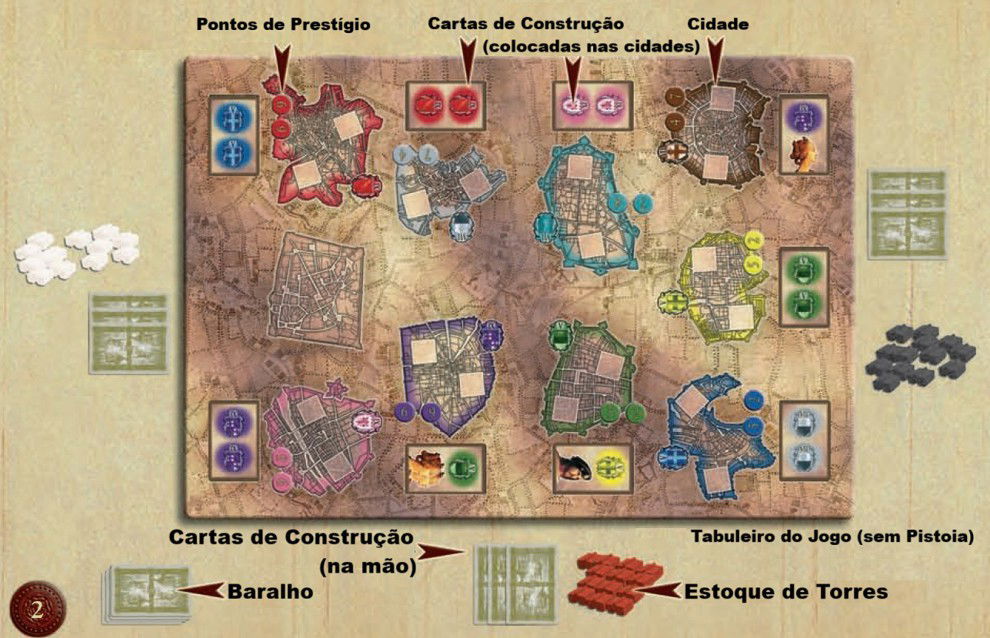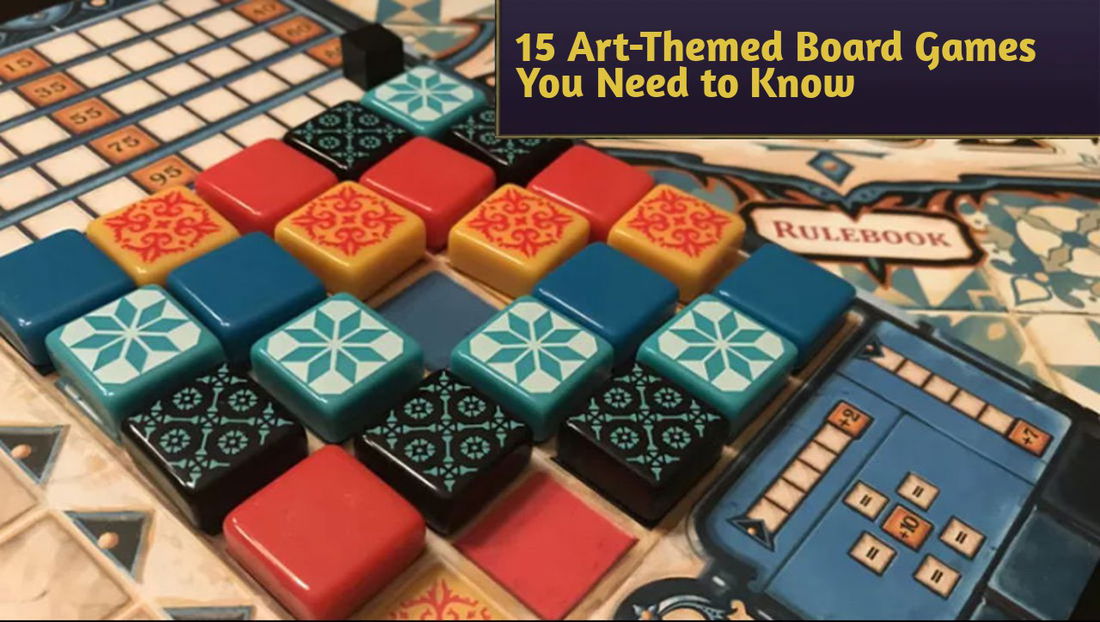Understanding the term: "Patrician"
In medieval Italy, the term "patrician" was used to designate members of the elite, that is, influential families who held political, social, and economic power in the cities.
The origin of the term comes from Latin, patricius, which originally designated the aristocracy of Ancient Rome. They were noble citizens, with political rights and privileges that distinguished them from the plebeians.

The term "patrician" came into use in the Italian middle ages after the fall of the Roman Empire, as many Italian cities maintained social structures inspired by Ancient Rome. It went on to refer to wealthy and influential families, often linked to commerce, public administration, or the Church.

Italian patricians had access to the administrations, influence in political decisions, and legal privileges. In short, being called a patrician in medieval Italy was a sign of status, nobility, wealth, and urban power.
This is the premise of the game we'll explore: Patrician.
Patrician: Game Info
Patrician is a 2-to-5 players game, age 10+ by designer Michael Schacht. Art, as usual in games by this designer, was done by the Design/Main studio, with several collaborations, even Michael Schacht himself.

Patrician was released in 2007 by AMIGO. Its mechanics include: hand management, set collection, and area influence/majority.

In 2008, one year after its release, Patrician was nominated for Best Boardgame in Japan.
Playing the game
We are master builders in the middle-ages, trying to profit from vanity-driven italian families. We must shrewdly accept the building orders of the patrician families to position yourself in the right place at the right time. Play your cards right, and your name will be famous among the rich and powerful!
This is the background for Patrician!
In Patrician, victory points are earned by attending the same family more times and by building more floors of the cities' towers. Each city can only have 2 towers, one which awars the highest score, and the other awards the lowest score. During the game, there are 2 different types of special cards that give advantages to the players. It's time to strategize!
The game setup is like this: Place the central board in the middle of the table (make sure the board is on the appropriate side: with 2 to 4 players, use the side without the city of Pistoia; with 5 players, use the side with 10 cities). Place 2 prestige point tokens in each city, separate the initial building cards (the ones with an asterisk), shuffle them, and deal 3 to each player. Shuffle the rest of the cards, randomly place one card in each city, and leave the rest of the deck near the central board. Finally, each player takes their tower pieces (the amount varies according to the number of players).
And that's it!

Each turn consists of 5 Phases, namely:
- Phase 1: play a card;
- Phase 2: place towers;
- Phase 3: perform a special action, if possible;
- Phase 4: draw a card;
- Phase 5: replace a card.
Phase 1 is very strategic! By playing a card from your hand, you are deciding in which city you will build one or more tower floors. Furthermore, the card you choose may have:
- one or more coats of arms;
- one or two patricians;
- a special symbol.

The cards, once played, will remain in front of you and may even count as victory points at the end of the game: every 3 identical patrician images gets you 6 points. This is why attending to the same patrician multiple times is advantageous. If you have a special action symbol, it can be used in Phase 3.
During Phase 2, placing towers, note that the card you used has at least one city coat of arms. Some cards have 2 coats of arms of the same city, which makes them very powerful, as they allow you to build 2 stages of that city's tower.
Simply place one (or two) of your towers in the respective city. Note that each city will have 2 towers; choose which one you will contribute to. Or, perhaps, even both, if you have the card with 2 coats of arms. This action is strategic because, with 2 coats of arms on the building card, you can choose to place 2 stages on the same tower or one on each. Use this to your advantage!
You will only perform Phase 3 and do a special action if the card you chose has one of the two special symbols:
- move the top floor;
- take a building card from any city.
Moving the top floor is a very powerful special action because, as the name suggests, it allows you to move the top floor of one tower to another, and this can greatly alter the towers' score. However, this action has some restrictions:
- you cannot perform this special action in the same city where you placed a floor this turn;
- It has to be a city that hasn't been scored yet;
- There has to be at least one tower piece in the chosen city.

If you cannot meet these restrictions, you will not be able to use the special action, so you'll just skip it.
The other special action, drawing a building card from any city, is pretty self-explanatory. Note that you are not restricted to drawing the building card from the city where you just contributed to the tower's construction.

This is a huge advantage! After all, sometimes you want to build a tower floor in a city, but the building card from that city, which will go to your hand, isn't very appealing. With this special action card, all other building cards from other cities become available to you. Just choose the one that best suits your strategy.
Phase 4 consists of drawing a card from the city where you just contributed to the tower construction. You'll draw this card unless you used a special action card for the turn, as we explained above. In that case, you'll draw a card from any city. Either way, you replenish your hand of 3 building cards.

In this phase, near the end of the game, the deck of building cards may be running dry, so there may not be any cards in the location where you chose to build. Therefore, simply skip this phase and continue playing.
Finally, in Phase 5, it's time to replace a card in the city where you picked up the card in the previous phase. Take the top card from your deck and place it in the empty space.
If, when replacing the card, your deck is empty, simply skip this phase.
Before passing the turn to the next player, check if the city you just contributed to has completed both towers, that is, with the total number of floors required by the city. If so, the city's scoring occurs as follows:
- check which of the two towers is the tallest: the player with more pieces in that tower takes the greater prestige token;
- the player with more floors in the shorter tower gets the smaller prestige token;
- other players do not receive points.

If there is a tie for the highest number of pieces on any tower, the player with the piece highest up wins. This is an important factor in your strategy, so you must always consider it.
That's a turn in Patrician!
Ending the game
The game continues until all players have played all their cards from their hand. Now, score the cities that haven't been scored yet, even if the total number of floors hasn't been reached.
Scoring is done as follows:
- From the building cards in front of you, each set of 3 identical patrician images gives you 6 points;
- Also add up all the prestige tokens you've earned during the game.
The sum of these victory and prestige points is your final score.

The player with the most victory points is the grand builder and winner of the game!
If there is a tie, the player with fewer tower floors on the board is the winner. If the tie persists, the tied players share the victory!
Strategy Tips
Patrician is a strategic game where you have to manage various things and try to anticipate some turns. I will explain this below.
In Phase 1, before playing a card, carefully consider which city is worth more for you to build a tower floor on, because the building card you will get after collaborating there may or may not be interesting to you, and this will make all the difference in your strategy. Therefore, take this into consideration when choosing a card to play on your turn.
Another important factor in this Phase is analyzing which family you are serving when playing your card. Remember, serving the same family 3 times guarantees you 6 victory points. Furthermore, if you can do both, that is, play a card and, and when you pick up the building card from the location, it is from the same family you just served, you are set for success. Or, at least, from the same family whose building cards you already have in your hand. Therefore, it's possible to anticipate or prepare for several turns ahead.
Obviously, for it to be a perfect play, it would be great to also match the coat of arms of a city you're interested in building. Or maybe there's an important building card for your strategy in that city. Now that's even better! But experience tells me that this ain't so easy. Still, if you can do it, great job!
Regarding Phase 2, placing towers, there's an important detail: each of the city's two towers must have at least one floor. If you want to place the last floor of a tower and the other locations is still empty, you have to place the tower piece in the empty space.
Note that the total number of tower pieces allowed in each city is represented by the Roman numeral printed on the city's coat of arms. Thus, a city can receive 9, 7, or 5 tower pieces. For example, if a city's coat of arms shows "VII", then exactly 7 pieces will complete the city's towers.
Pay close attention to this Phase, as the score depends on who contributed the most to each tower. So, do your calculations and decide correctly which of the 2 towers to build a floor on, or even both, depending on the card you played.
Finally, Phase 3 will only occur if you perform a special action. This happens if, on your turn, you used one of the 2 special cards. Both are powerful, but strategically there's a right time to use them:
- Taking a construction card from any city is very useful at the beginning of the game, as you can choose the construction card that helps your strategy for the rest of the game;
- Moving the top floor is better at the end of the game, when you need to strategically change the towers to score better.
These cards greatly change the dynamics of the game, making it very strategic and, obviously, rewarding good plays over your opponents.
Based on these tips, manage your building cards, keep an eye on the constructions, cater to the same family multiple times, devise your best strategy, and win in Patrician.
Rules Video
Rules:
Pedagogical Tips
If you're looking for a language-free game that's easy to explain, totally iconic, and provides important stimulation for children, Patrician is the game for you!
Patrician has no text in the game's components. I mean it, zero! This is a positive, as it makes it easier and more enjoyable for children. It has interesting wooden components that add charm, capturing the kids' attention. It's hard for them to resist stacking their own pieces during the game. Who hasn't played with wooden blocks and built a city before?
In the game, children will have to manage their cards and the number of available pieces, which are their resources, to best decide where and when to use them. This introduces the concept of decision-making, which in Patrician is explored in various situations, such as:
- which building card to play;
- which tower to collaborate on;
- which family to help;
- whether or not to use a special card;
- and much more.
Finally, in addition to this, strategy and logical-mathematical reasoning obviously come into play, as their decision will be based on the building cards in hand and those available in the cities. Furthermore, spatial orientation regarding where and how to build is heavily emphasized.
Pedagogically, Patrician teaches resource management, stimulates strategy, decision-making, logical-mathematical reasoning, spatial orientation, and, on top of that, it's fun!
I recommend Patrician for your collection!












— تعليقات 0
, ردود الفعل 1
كن أول من يعلق